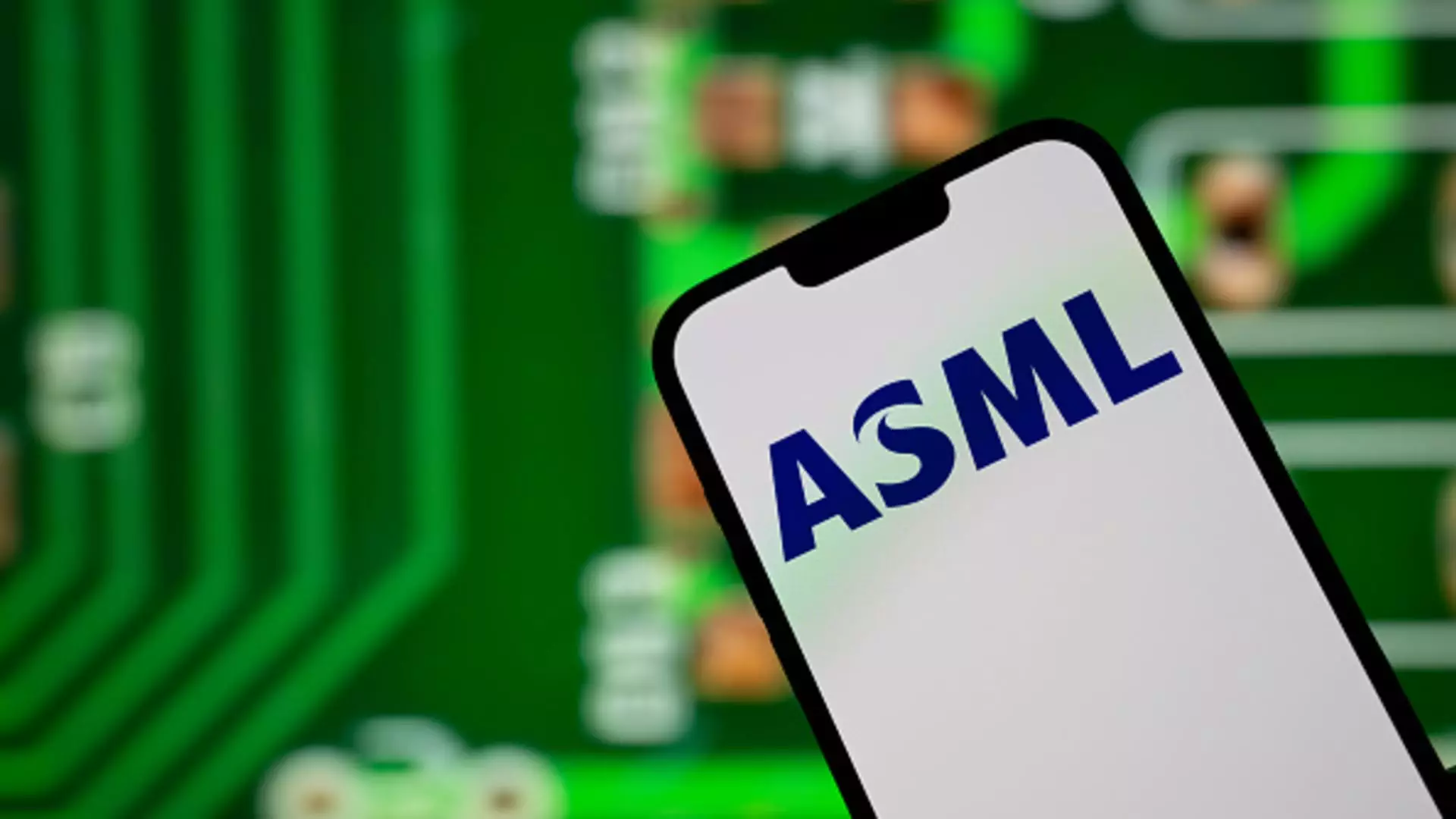In a striking revelation, the Dutch semiconductor giant ASML has revealed that its net bookings have fallen short of expectations, heightening concerns over the future trajectory of demand for its essential chipmaking machinery. In the first quarter of 2025, ASML reported net bookings of 3.94 billion euros, which is a significant deviation from the anticipated 4.89 billion euros predicted by Reuters. This development not only reflects a momentary setback for the company but may also indicate broader challenges confronting the semiconductor industry as a whole.
Compounding this disappointment, ASML’s net sales reached 7.74 billion euros, slightly lower than the 7.8 billion euros that analysts had forecasted. Yet, the company saw its net profit of 2.36 billion euros slightly exceed expectations of 2.3 billion euros, offering a glimmer of optimism amid the overarching uncertainties. However, these figures cast a long shadow, raising questions regarding the sustainability of demand in a precarious market.
The CEO’s Cautious Outlook
In the aftermath of these results, CEO Christophe Fouquet’s statements bore a duality of optimism and concern. Despite reiterating the belief that demand remains robust, particularly with artificial intelligence acting as a major catalyst, he did not shy away from highlighting the “uncertainty with some of our customers.” This admission suggests that while ASML may be poised for growth, external factors could dampen its performance in the upcoming quarters.
Fouquet’s insights painted a picture of a company straddling the line between adaptability and caution, as he elaborated on the “new uncertainty” emanating from tariffs and geopolitical tensions. His assessment underscored the unpredictable landscape of the semiconductor supply chain, where variables such as international relations can drastically influence market dynamics.
The Geopolitical Landscape and its Implications
Recent developments in U.S. trade policy further add layers of complexity to ASML’s operational environment. The fragility of global chip stocks in response to President Donald Trump’s proposed tariff plans is indicative of the broader ramifications on semiconductor supply chains. Though recent exemptions for smartphones, computers, and semiconductors signal some relief, lingering uncertainties stemming from national security investigations into imported semiconductor technology place the entire sector on shaky ground.
The intricate interplay of tariffs, regulations, and evolving market demands presents a formidable challenge for ASML and its peers. As the company braces for the unpredictable shifts in its operational landscape, the implications of these geopolitical tensions could resonate throughout the semiconductor industry, compelling firms to rethink their strategies and partnerships in the face of evolving global standards.
Future Projections Amidst Doubt
Looking ahead, ASML maintains its revenue guidance for 2025, estimating between 30 billion euros to 35 billion euros. While this range may appear optimistic, it is crucial to consider the external pressures that could restrict growth potential. The fluctuating nature of demand, spurred by technological advancements in sectors like artificial intelligence, indicates a market that could shift rapidly in response to economic and political changes.
In this volatile environment, ASML faces a Herculean task: to navigate through the labyrinth of uncertainty while remaining a pivotal player in a field defined by rapid innovation and competitive dynamics. The road ahead is laden with potential but also fraught with risk, making it imperative for ASML to continuously reassess its position and adapt strategies in response to evolving market realities.

